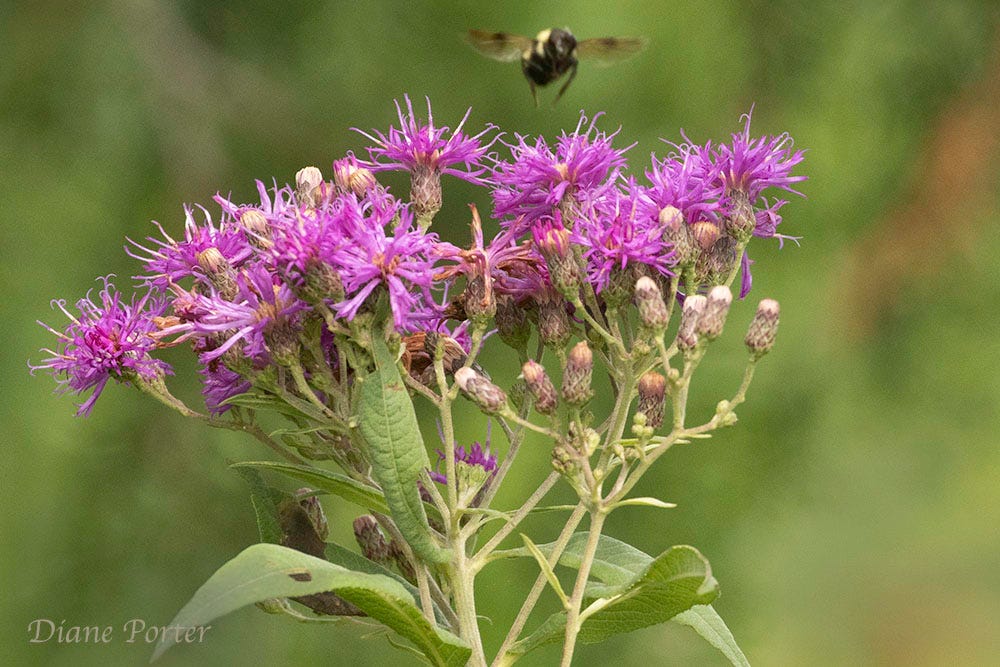Diane Porter of Fairfield first published this post on My Gaia, an email newsletter “about getting to know nature” and “giving her a helping hand in our own backyards.” Diane also maintains the Birdwatching Dot Com website and bird blog.
When I planted its seeds, I’d never met Large-flowered Beardtongue (Penstemon grandiflorus) in real life. All I knew was that it was a primeval wildflower. I wanted to see what it was like, once upon a time, back when this land was a tallgrass prairie.

















